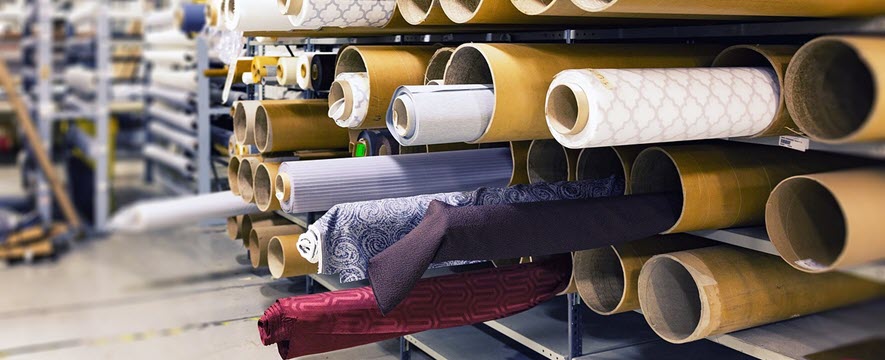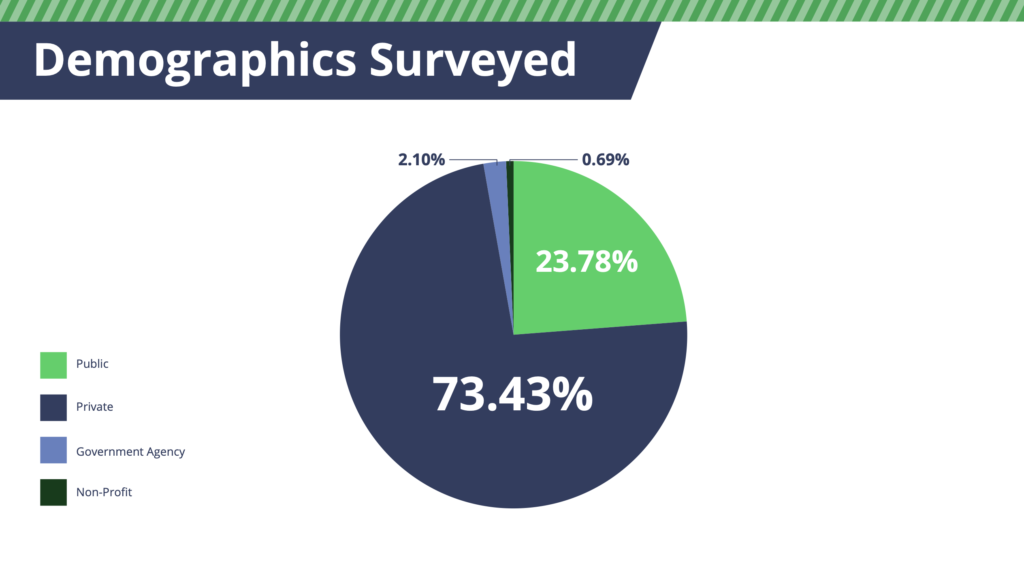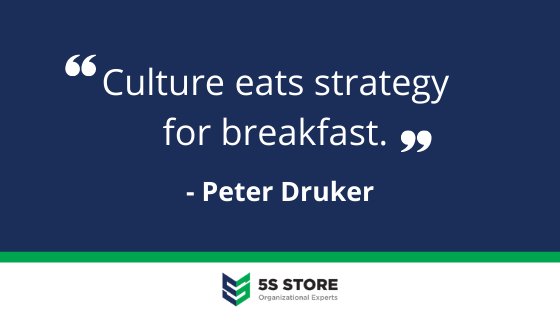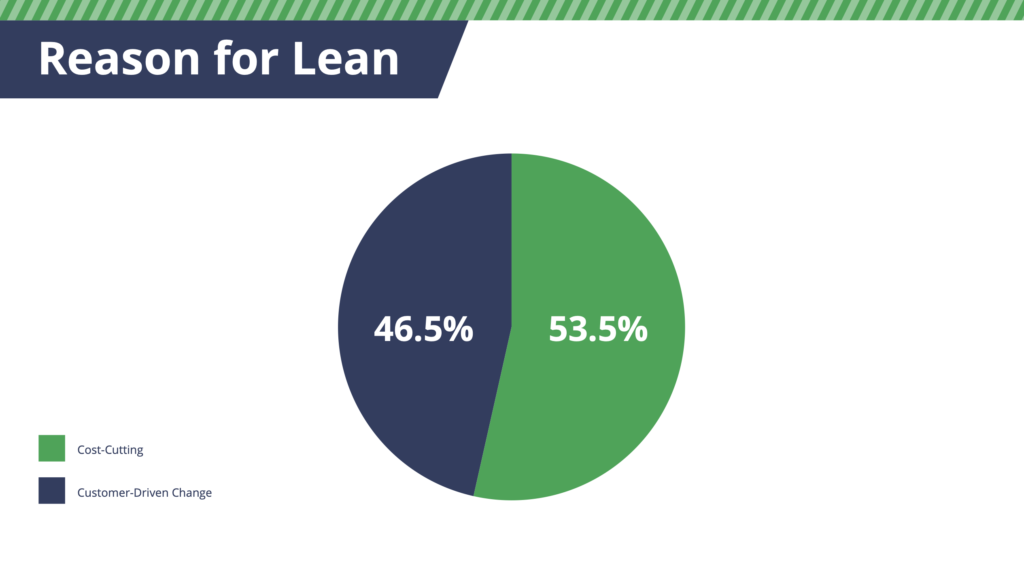
Discover Lean Trends and Practices To Get Your Company Back on Track

The global pandemic of 2020-21 left no company untouched. We faced a host of issues all at once, including:
- Disrupted supply chains,
- Altered consumer demand,
- Unstable employee availability,
- And increased government oversight.
In the middle of this upheaval, some Lean-practicing companies were left wondering:
- Do the benefits of Lean initiatives outweigh the time spent implementing them?
- Is it possible to get the full value of Lean manufacturing during a pandemic?
Our 2021 State of Lean Manufacturing Report identified lean tends and practices lean practitioners can use to create sustainable programs to weather any crisis.
We began collecting data on the state of Lean manufacturing in August of 2020. Our goal at that point was simply to create benchmarks. There needed to be a way for Lean practitioners to measure their performance from year to year. These benchmarks could help them pinpoint strengths and weaknesses. A goal of Lean is continuous improvement, and these benchmarks would help.
We did not yet realize the incredible impact this ongoing crisis would have on our results.
Our goal was to get a big picture view of the state of Lean manufacturing in 2021.
We worked with industry experts to create a comprehensive survey of current Lean trends and practices. We then gave this survey to 142 Lean-practicing companies from around the globe. These companies represented:
- Public and private sectors
- 21 different industries
- A range of company sizes, with most employing between 100 and 5,000 people

Our aim was for the readers of our report to see themselves reflected in the responses.
What Lean trends and practices were practitioners focused on?
The general trends show that most companies are focused on addressing three main areas in production:
- Overproduction
- Defects
- Quality control.
Most are incorporating several different lean tools to address issues. 5S is by far the most popular. But the biggest trends had to do with what is being overlooked.
The global pandemic impacted companies’ focus.
We did not set out to analyze Lean trends and practices in manufacturing during a pandemic. Yet our results could not help but reflect that reality. Our results showed that the pandemic affected some companies’ commitment to Lean initiatives. Lean can be time-consuming to put into place. This unprecedented crisis left many of us scrambling just to survive.
Yet, most companies recognized that the tools for their survival were right in front of them. Lean practices help companies adapt in the face of change. Some companies reported no change in their Lean initiatives. Others reported an improvement over 2019.
Why did some companies find success with their Lean practices during COVID-19, while others struggled?
Our survey results revealed three major lean practices that many companies were not employing:
- Fully engaging the executive team
- Incorporating value stream mapping
- Shifting the focus of the Lean initiative.
Each of these practices affects the ultimate success of a Lean program. If lean practitioners want more effective Lean initiatives, they need to focus on these areas.
Only half of the respondents reported executive sponsorship for their Lean programs.
Why is this noteworthy? Engaging the executive team is critical to the success of lean initiatives.
Executive sponsors are not only the main people responsible for the success of the Lean program, but also the ones who see the big picture and how all the moving parts work together. They keep the program on track and moving toward its goals. The executive team creates a culture where Lean practices can thrive.
Even the best strategies need a mechanism to make them work. A Lean culture is that mechanism. Whatever your Lean plans are during or after COVID, the executive team is critical to their success.

Another underutilized practice we saw in our data was value stream mapping (VSM).
Only about 30% of companies have mapped all or nearly all of their product value streams.
There is an opportunity here for significant improvement in customer satisfaction. This ultimately leads to the overall success of a company’s Lean initiative. VSM provides a big picture view of the processes that develop a product or service and get it into the hands of the customer. These maps help companies pinpoint where inefficiencies or wastes are occurring. They also provide opportunities to add value for the customer. This added value increases customer satisfaction and retention.
VSM should be fully implemented in all lean-practicing companies. This is especially true for those who are not yet incorporating this third practice. Without a proper focus on customer value, Lean programs are not sustainable.

More than half of Lean practitioners focused more on lowering costs than on customer-driven change.
Economic challenges make cost-cutting measures understandable and necessary. And one benefit of Lean manufacturing is that it does reduce costs. But the focus on saving money is too narrow. It does not leave room for the many other benefits that a Lean culture brings to a company.

A focus on cutting costs can lead to the adoption of non-Lean practices. Using lower-quality components or hiring less-skilled workers can cut costs. But at what price?
Lean practices that focus on adding value for the customer accomplish more by doing less. These programs:
- Eliminate wastes and improve the flow of production. This reduces lead times and provides the customer with a quality product.
- Implement system-wide changes that are more sustainable than localized adjustments
- Create a stable workplace with low employee turnover that provides teams with the tools they need for greater efficiency.
Whether Lean is being practiced in facilities or warehouses, the ultimate goal is to add value to the customer. This focus is what makes Lean initiatives successful and sustainable. Practices that create value for the customer provide the other benefits of Lean. They create workplaces that are:
- Safer
- More productive
- More efficient
- Better places to work.
And yes, they also reduce costs.
Properly implemented, Lean benefits all stakeholders and contributes to a thriving business.
Our comprehensive survey revealed additional Lean trends in facilities and warehouses.
These Lean trends and practices included:
- What Lean tools are most popular and how they’re being used
- How wastes are being addressed (or not)
- Ways quality control measures are implemented
- The best practices being used by most Lean-practicing companies.
It is important to note that the Lean 7 Measures of Performance were not being used across the board. Even the most popular measure, delivery schedule achievement, was only being used by about 60% of the surveyed companies. If every company implemented all seven measures, how would their Lean initiative improve?
The 2021 State of Lean Manufacturing report has one major goal: to give Lean practitioners what they need to achieve sustainable success.
The global pandemic was a level of disruption that most companies had never before experienced. Lean-focused companies have the tools to weather the storm, whether it’s another pandemic, a natural disaster or something we can’t yet imagine.
What lean trends and practices can your company implement to make this year more successful than the last?

